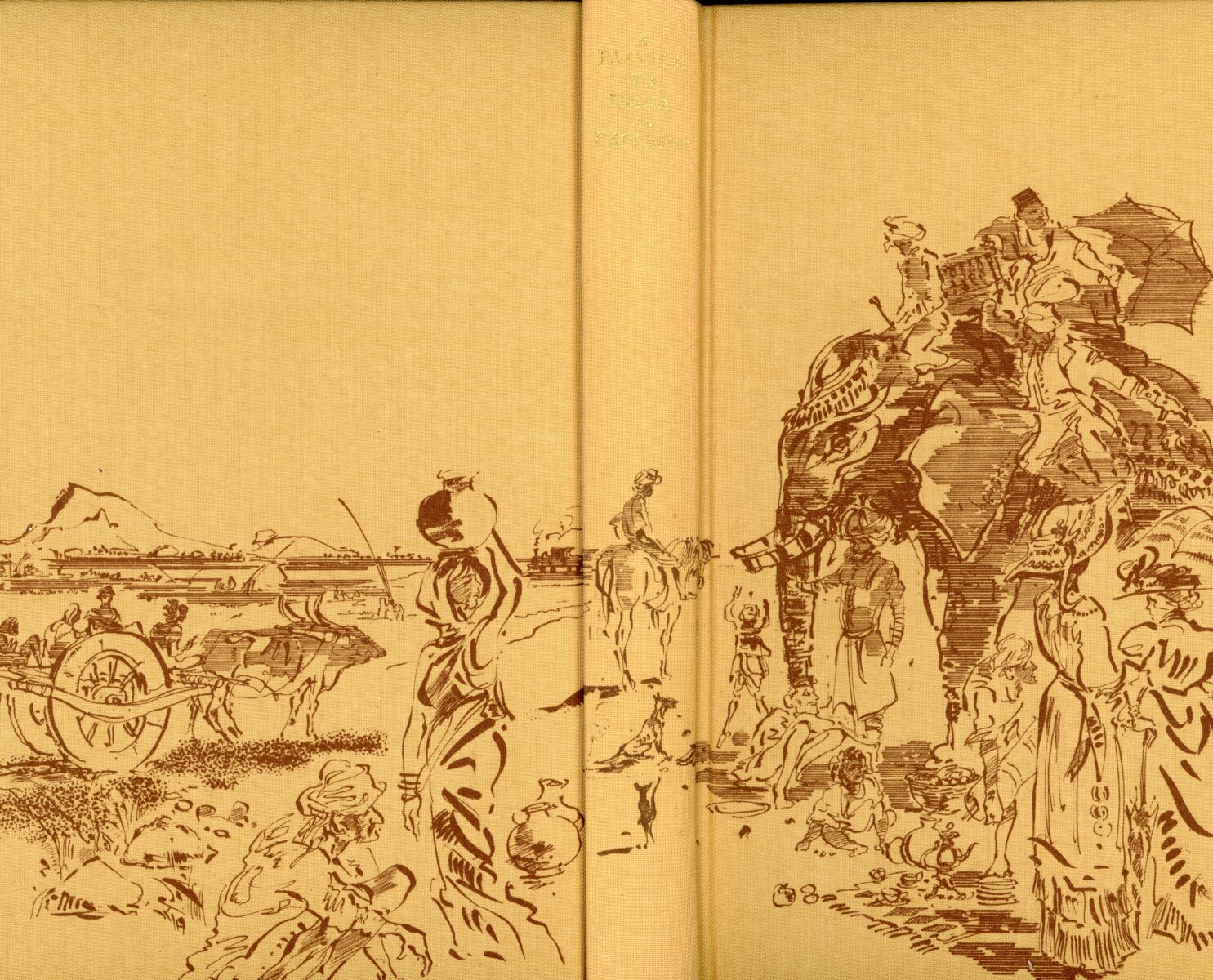Today I completed my reading of
This beautifully written novel, although first published in 1924, depicts the attitudes of the British governing classes, their relationships among themselves and with the Indians, themselves representing different cultures and beliefs. The barely concealed tensions and resentments between the various groups ready to explode as they eventually do during a court case inevitably exposing deep seated prejudices, not just between governors and the subjugated, but also among the different faiths within the sub-continent.
The truths of the pivotal accusation are dependent upon individual perceptions depending upon individual attitudes and fixed convictions.
With the benefit of his insightful characterisation Forster gives a profound, complex, picture of his protagonists with sensitive narrative. He has a mastery of dialogue. The prose flows along like the Ganges, and is full of examples of his descriptive skills, making good use of similes such as “three ladies…suddenly shot out of the summer-horselike exquisitely coloured swallows” , metaphors, adjectives and adverbs. Perhaps this paragraph is an extended metaphor in itself: “Going to hang up her cloak, she found that the tip of the peg was occupied by a small wasp. She had known this wasp or his relatives by day; they were not as English wasps, but had long yellow legs which hung down behind when they flew. Perhaps he mistook the peg for a branch – no Indian animal has any sense of an interior. Bats, rats, birds, insects will as soon nest inside a house as out; it is to them a normal growth of the eternal jungle, which alternately produces trees, houses, trees. There he clung, asleep while the jackals in the plain bayed their desires and mingled with the percussion of drums.” The descriptions of the significant Marabar caves are equally polished, as is that of the sensitive depiction of the punkah-wallah keeping the fan turning in the courtroom. This was a man of considerable beauty of the lowest caste performing a routine task with no understanding of what was going.
The book contains predictions that India will become a nation free from British rule; its own indigenous people will become one of equality was not considered.
Michael Holroyd’s informative introduction puts this classic in the context of the author’s time, his childhood, and his other work.
The bustling illustrations of Ian Ribbons requiring close study for interpretation perfectly reflect the book and its subject. The Header picture shows the boards and spine of the Folio Society’s production.
This evening we all dined on meaty sausages, creamy mashed potatoes, crunchy carrots, firm cauliflower, and tender broccoli stems, with which I drank more of the Malbec.












Love your description of the book and now want to read it. We saw the movie about 40 years ago when we needed some time after several margaritas and lunch before driving home.
Thanks very much, Pat
Thank you for this review Derrick. It sounds like a very interesting book
Much appreciated, Sylvie
Thanks for the review, Derrick. It has been years since I first read this book.
Thank you very much, Rosaliene
Read a long time ago. I can’t remember what it was about. You have sparked me interest again.
Thank you very much, Chrissy.
Thank you for your insightful review, Derek! The illustrations look muddy and chaotic to me.
Thanks very much, Liz. An apt reflection on the subject, I thought
You’re welcome, Derrick. I agree.
Your reviews always make me want to read the books.
Thank you very much, Sue
A wonderful review of a powerful, beautifully written book! 🙂
The illustrations are “busy”…but as I look at them intently, I find them interesting, detailed, and with much movement. 🙂
(((HUGS))) and ❤️❤️❤️❤️❤️ for everyone at your home! 🙂
Thank you so much, Carolyn XX
Well done Derrick … a wonderful review of a thought-provoking book …
Thank you very much, Ivor
Another thoughtful review. I read the book many years ago. I think it was after I saw the movie.
Thank you very much, Merril
I don’t think I have read this book thoughts I have heardbso much about it. Thank you.
I read this last year ????
🙂 Thanks very much, Rupali
What a wonderful and indepth review, Derrick. Thank you for sharing it.
Much appreciated, Eugi
My pleasure, Derrick.
Your review certainly makes me want to read this book. I had to look up the book to see when it was published—1924. Did the book reflect the prejudices of the times? Or was Forster more sensitive than most? Here’s an interesting fact: Forster died in 1970, when we were both alive. He seems to me an author from a bygone era.
Yes, I think he was from an early era – but more far sighted than most. I think he was reflecting current attitudes which he probably didn’t share.
Yes, important to separate a character’s point of view from an author’s point of view. They are not always one and the same.
I like the how the illustrator captures the energy and color of India.
Indeed. Thanks very much, Sherry
I remember seeing the movie and I just checked to see if I had this book in my 3-book trilogy. Nope… Dang it. Will have to look into reading this one – your reviews are always so enticing.
Thank you very much, Dale
That sounds like a book I would like to read. It did not know there was a movie version, too.
Thanks very much, Lavinia
Hi Derrick, this is a great book ????
Thank you very much, Robbie
Interesting that both you and Andrew are “in India.”
An amusing coincidence
????